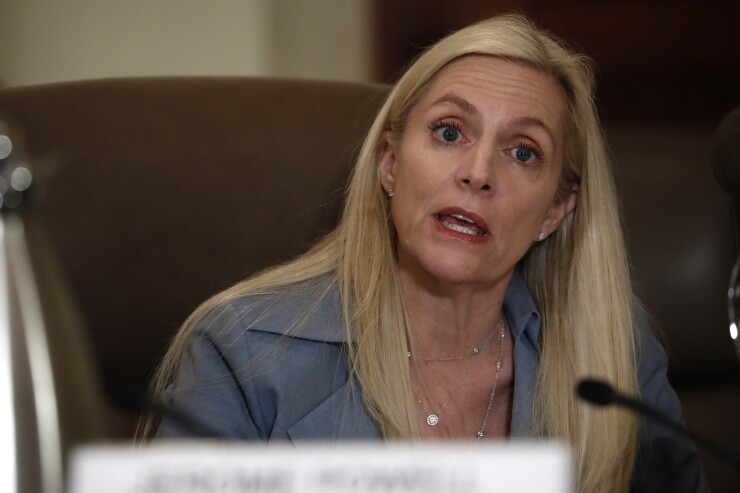Federal Reserve Board Gov. Lael Brainard on Friday said the three federal banking agencies should work together to reform the Community Reinvestment Act rather than pursue separate tracks.
The Fed, Federal Deposit Insurance Corp. and Office of the Comptroller of the Currency have had difficulty reaching consensus on a CRA modernization plan, and last year the OCC took the unusual step of issuing its own advance notice of proposed rulemaking to gather public feedback on a path forward. The OCC has made the comments available to the other two agencies.
While the nature of the comments varies greatly, Brainard said, they demonstrate a desire among stakeholders for reforms to be implemented consistently across the three banking regulators.
“If there is one common thread, it is that support for the Community Reinvestment Act is broad and deep,” Brainard said at a CRA research symposium hosted by the Federal Reserve Bank of Philadelphia. “They asked that the three banking agencies work together toward a joint rulemaking proposal so that CRA policies can be clearly and consistently applied across agencies.”

The OCC
The CRA, enacted in 1977, requires federally insured banks to provide financial services to low- and moderate-income customers in the communities they serve. The law was passed to combat “redlining” — the practice of denying bank loans and services to people and communities of color.
As the law is currently implemented, banks are only reviewed for their lending practices in areas where they have a physical branch. That means banks get no CRA credit for activities beyond their branch network, and conversely have no CRA obligations in areas where they may have a significant market share but no physical branch.
Brainard said while the CRA’s assessment area policy is an area that many commenters say needs to be revisited, abandoning the branch-based system altogether is not the answer.
“The public comments we have read so far suggest general agreement that there is a need for an update — but not a complete overhaul — of assessment areas through a balanced package of reforms,” Brainard said. “We have heard general support for assessment areas that reflect each bank’s business model, recognizing that branch-based assessment areas work for many banks but that additional or different assessment areas may be appropriate for others.”
She added that both the public comments and CRA roundtables held by a number of regional Fed banks have demonstrated broad support for having CRA obligations mirror the size of the lending institutions concerned.
“It was clear that CRA regulations cannot be one-size-fits-all,” Brainard said.
Brainard added that the CRA reforms should be implemented with an eye toward encouraging proactive investment in areas that lack financial services and products, and likewise should be made more transparent and understandable for the banks themselves.
“There is an openness to expanding the use of metrics that evaluate components of a bank’s activity on an assessment area level, while recognizing the importance of also leveraging performance context information,” Brainard said.





